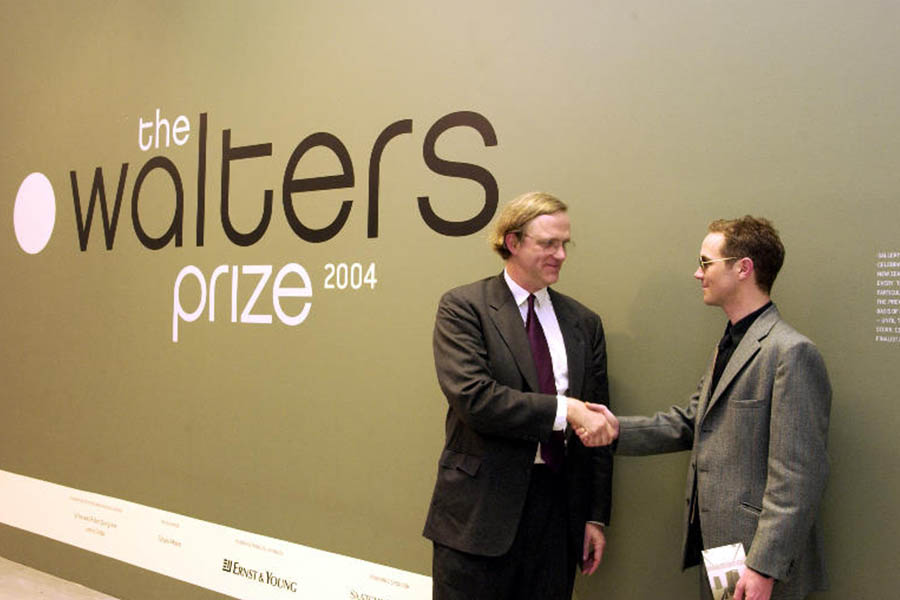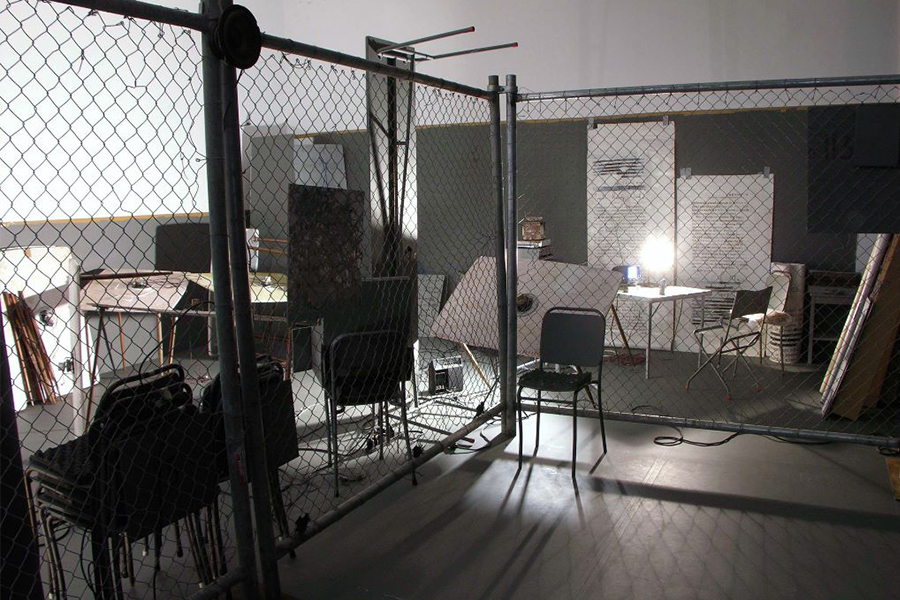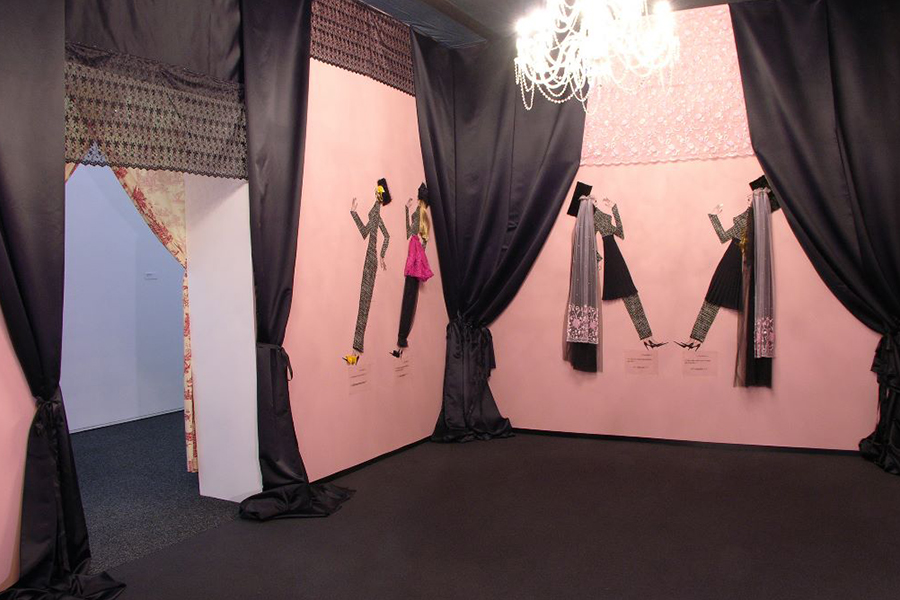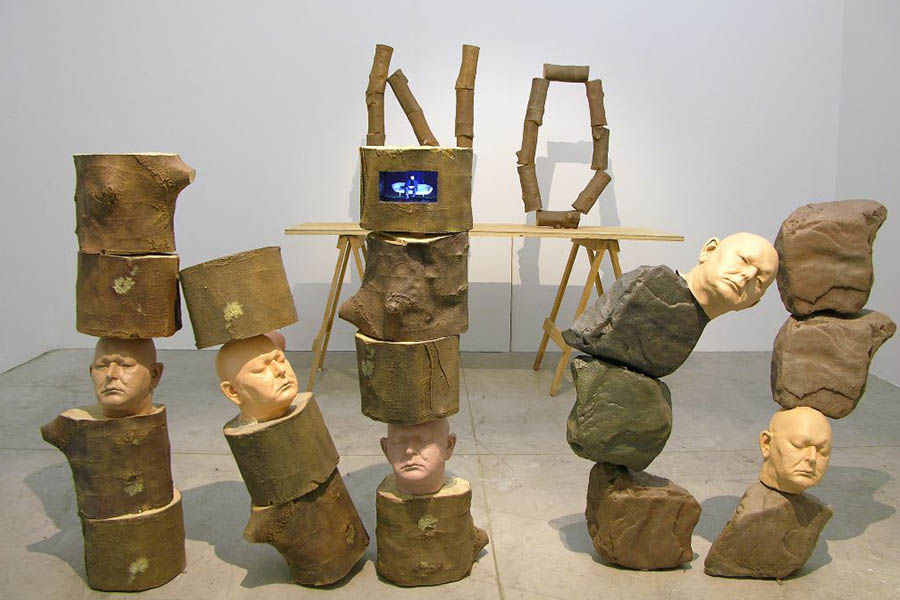—
exhibition Details
Winner
Finalists
International judge
Judge's statement
Jury
Jury's statement
Sponsors
Coordinating curator
Publication
Winner of the Walters Prize 2004
The Walters Prize 2004 was awarded to et al. for restricted access. The winner was announced by international judge, Robert Storr at a gala dinner on 29 October 2004.
Finalists
- restricted access 2003, by et al.: first shown at Govett-Brewster Art Gallery, New Plymouth
- <> 2004, by Jacqueline Fraser: at National Museum and Gallery, Cardiff
- No Exit Parts 1 and 2 2003, by Ronnie van Hout: at Linden Gallery, Melbourne, and Physics Room, Christchurch, respectively
- The Truth Effect 2003, by Daniel von Sturmer: at Australian Centre for Contemporary Art (ACCA), Melbourne
International judge
The 2004 Walters Prize was judged by leading international art curator Robert Storr. He is best known for his time as Senior Curator at New York's Museum of Modern Art (1990-2002), where he was responsible for such shows as the critically acclaimed 2002 Gerhard Richter retrospective. In 2000 he was on the selection panel for the Biennale of Sydney, which included New Zealand artists Bill Hammond, Lisa Reihana and the Pacific Sisters. In 2001 he was on the Turner Prize jury that selected Martin Creed's Work #227: The Lights Going On and Off. He has written on many key 20th century artists including Louise Bourgeois, Willem de Kooning, Raymond Pettibon and Charles Ray. Storr is a contributing editor at Art in America, and frequently writes for Artforum and the New York Times. In 2002 Storr was appointed Solow Professor of Modern Art at the Institute of Fine Arts, New York University.
Judge's statement
restricted access is a work that I had not seen before, nor had I seen works by this team of artists, and I was very, very, struck by it. It seems to me that it has in it a couple of basic ingredients, which one hopes you would find in work of this kind. One is that it has an idea, and two, that it has a lot of feeling. There is the tendency to dichotomise – to say the mind is separated from feeling. In this case, the challenge to think is also backed by a whole series of factors – sound that is difficult to deal with but also powerful; words that are difficult to listen to but that also say something; you are put in a situation where you have to do two things that the world would like you not to do simultaneously – to make sense of something and also to absorb it.
The reason I chose et al. is, in part, because it puzzles me the most. It seems to me in a variety of ways that this team of artists has radically addressed the problem of contemporary art. In one installation you have a place to sit – but you're not sure if you should sit there. You have a whole lot of things to see - but you can't get to them. You have a series of voices speaking – someone on a television in the distance but you can't hear them (it looks like a 50's or 60's interview show – so you know the type but not the words – it's like knowing a song but not the lyrics). You also have a rather steady art historical lecture about what the position of the artist is, and interprets the dilemmas of what the artist intends and what the public receives. Another speaker, what is in effect, a public debate about this kind of art and its relation to this country. But it's a very intelligent orchestration of all the dilemmas that the public actually will feel when considering work they do not know. Particularly the dilemma that I think is true of alot of art – the art that does not love the art lover back. It doesn't necessarily spurn the art lover; it's not hostile to the art lover; but it basically says 'Come to me, but I will not reward you immediately with what you're looking for. Come to me, I will engage you in a process of figuring out what I am, and who you are.'
Jury
The 2004 jury comprised:
- Christina Barton – writer, curator and lecturer in Art History at Victoria University of Wellington
- Dr Deidre Brown – freelance curator and Senior Lecturer in Architecture at the National Institute of Creative Arts and Industries, University of Auckland
- Greg Burke – then director of the Govett-Brewster Art Gallery
- Justin Paton – then curator at Dunedin Public Art Gallery and Editor of the journal Landfall.
Jury's statement
Selecting our four artists who have made an outstanding contribution to New Zealand art in the last two years proved challenging and exhilarating. We have chosen artists whose work we consider timely and important, who offer something distinctive. Each has affected us – as regular viewers of current practice – in memorable ways.
et al. are a conundrum: a shifting group of artistic entities designed to jam the systems and institutions of art. Their installations over the last two years – seen in such shows as abnormal mass delusions? and Public/Private: The 2nd Auckland Triennial – have consistently produced an eerie critique of our human condition, exposing our tendency to trust inevitably flawed intellectual models and technological solutions. In such light, restricted access from abnormal mass delusions?, with its massing of adjusted and recycled objects behind a mesh barricade, is a sombre experiment in resisting the relentless drift to obsolescence.
Ronnie van Hout is one of a number of contemporary artists who explore the image of the artist as a wayward figure in contemporary life. But he brings to this subject an array of idiosyncratic obsessions that situate his practice in the realms of the personal and the local. His recent series No Exit is characteristic. It presents the artist in a multitude of guises – creepy nature worshipper, alien abductor, abject idler, frustrated artist – in situations as solipsistic as the series' title. His works do something rare in the world of contemporary art -make you laugh but leave you strangely moved.
Jacqueline Fraser has enjoyed outstanding international success in the last two years. She brings an astute and elegantly barbed sensibility to her consideration of contemporary issues. In <>, a major installation conceived for Artes Mundi (an award exhibition at Cardiff's National Museum and Gallery featuring ten artists selected by leading inter-national curators), she uses glamorous textiles to clothe a line-up of wraith-like female figures, combining these with pithy epithets that sting us about our fascination for fashion in a world of inequality and grief.
Daniel von Sturmer may be less well known to New Zealand audiences, having made most of his work in Australia. His video installation The Truth Effect, seen last year at Melbourne's ACCA and Berlin's Hamburger Bahnhof, is a breath of fresh air. It orchestrates simple materials in lightly wrought situations within the confines of a simple white box. Represented via video, the box becomes something more: a spacious light-filled room, the white cube of the modern art gallery, a television studio or laboratory. What we see defies the simplicity of both origins and means, conveying to the viewer a new sense of the marvellous.
Sponsors
Founding benefactors and Principal donors:
Erika and Robin Congreve and Jenny Gibbs
Major donor:
Dayle Mace
Founding sponsor:
Saatchi & Saatchi
Principal sponsor:
Ernst & Young
Major sponsor:
Deutsche Bank
Coordinating curator
The coordinating curator for the Walters Prize 2004 was Robert Leonard.
Publication
Read the Walters Prize 2004 publication free online via ISSUU
- Date
- —
- Curated by
- Robert Leonard
- Location
- NEW Gallery, Upper level
- Cost
- $7 - $5
Related Content
Related Artworks
No Exit II
fibreglass, polymer clay, paint, found objects (clothing and shoes), mirror, taxidermy birds, trestle table, portable DVD players and videos (single channel, standard definition, 4:3, colour, stereo sound)
Auckland Art Gallery Toi o Tāmaki, purchased 2006







